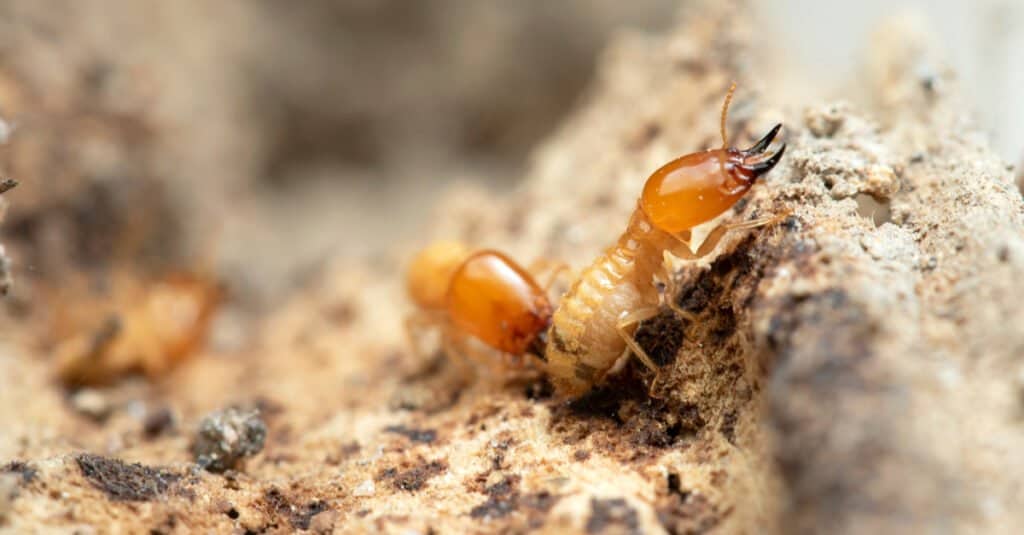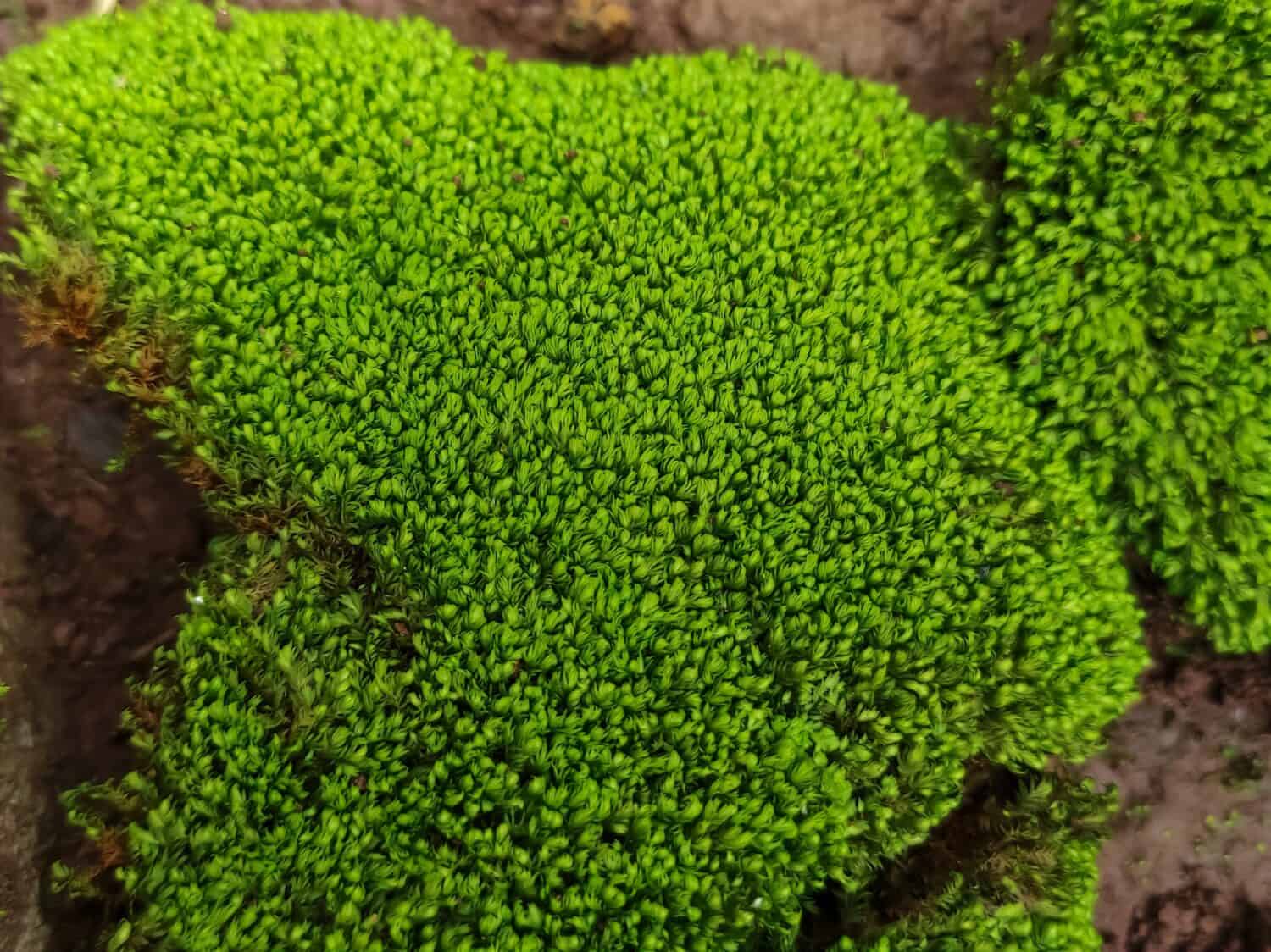Hey there, roof owners! If you’ve noticed a fuzzy green carpet forming on your rooftop, it’s time to pay attention. Moss might seem harmless, but it can cause some serious issues for your home. In this article, we’re diving into the reasons why giving moss the boot from your roof is a smart move.
1. It Can Harm Your Roof’s Structural Integrity
To keep your roof’s structural integrity intact, it’s crucial to remove moss from it. Moss can flourish in moist, shady environments like rooftops. While it might seem harmless, moss can cause damage over time.
Moss holds onto moisture, which can lead to the accumulation of water on your roof’s surface. This prolonged exposure to moisture can weaken the roofing materials, making them more susceptible to rot and decay. As moss spreads and grows, its roots can work their way into small cracks and crevices in your roof, further compromising its integrity. In freezing temperatures, the water absorbed by moss can freeze and expand, causing even more damage to your roof.
Just as well, the presence of moss can prevent your roof from drying properly after rainfall, as it blocks sunlight and air circulation. This extended moisture exposure can deteriorate the protective layers of your roofing material, reducing its lifespan and effectiveness.
To address this issue, it’s recommended to remove moss from your roof periodically. You can use a soft-bristle brush or a roof moss removal solution to gently scrub away the moss. Be cautious not to damage the roofing material while cleaning. Taking preventive measures, such as trimming overhanging branches to reduce shade and improving roof ventilation, can also help inhibit moss growth.
Regular maintenance and moss removal will help extend the life of your roof and prevent potential structural issues. It’s important to address moss growth promptly to ensure your roof remains in good condition and protects your home effectively.
2. It Can Cause Allergies
Getting rid of moss on your roof is crucial due to the potential for causing allergies. Moss can release spores into the air that trigger allergic reactions in some individuals.
When moss grows on your roof, it can release tiny spores as part of its reproductive process. These spores can readily spread across your environment by becoming airborne. People who have allergies or other sensitivities may feel symptoms including sneezing, coughing, itchy or watery eyes, and congestion when they come into contact with these spores. In more extreme circumstances, breathing in moss spores can make respiratory problems like asthma worse.
Due to their small weight, moss spores can easily be transported by the wind and dispersed around your property, even into your home through open windows and doors. When these spores are in your home, people who are allergic to them may continue to experience irritation and allergic responses.
You can make your home a healthier place for you and your family and lower the likelihood of allergy responses by making efforts to prevent and remove moss from your roof. By taking this action, you can create a more pleasant living environment and protect your well-being.

Moss buildup on your roof can lead to allergic reactions inside and outside your house. This can involve chronic sneezing, itching, and even more severe allergic reactions.
©Pixel-Shot/Shutterstock.com
3. It Can Impede Water Drainage
Clearing moss from your roof is essential to prevent hindered water drainage. Moss flourishes in damp environments and can accumulate on your roof’s surface and create problems for proper water flow.
The formation of moss makes your roof permeable, collecting moisture and obstructing the effective drainage of rainwater or melted snow. This will cause water to collect in some places, which over time may cause leaks and water damage. Moss can also cover gutters and downspouts as it grows, obstructing the flow of water away from your roof and house.
The buildup of moisture caused by moss can compromise the structural integrity of your roof materials. Prolonged exposure to moisture can lead to deterioration and weaken the roofing materials, potentially causing them to rot or become brittle. The added weight of wet moss can also stress the roof’s structure, leading to sagging or even collapse in extreme cases.
To address this issue, it’s important to remove moss from your roof. Gently scrubbing the moss with a soft-bristle brush or using a roof moss removal solution can help dislodge the growth. Regular roof maintenance, including keeping gutters and downspouts clear, can aid in preventing future moss buildup.
4. It Can Harbor Pests
Removing moss from your roof is important to prevent the harboring of pests. Moss can create an ideal environment for various pests to take up residence.
Moss provides a damp and sheltered habitat that attracts insects, spiders, and other critters. Because moss provides moisture and shade, these pests are drawn to it, making your roof a prime location for nesting and reproduction. Pest activity can eventually result in more serious problems, including infestations within your house and structural damage to your roof.
Ants, termites, and mosquitoes are a few pests that are frequently connected to roofs covered with moss. These pests not only pose health dangers to you and your family but may also ruin your roof. For instance, termites and ants may harm timber structures, while mosquitoes might spread disease.
By removing moss from your roof, you disrupt the habitat that pests rely on for survival. Regular maintenance that includes moss removal can help discourage pests from taking up residence on your roof and prevent potential infestations. Additionally, keeping your roof clean and dry makes it less appealing for pests to establish themselves.
Taking proactive measures to remove moss from your roof not only safeguards your roof’s integrity but also helps protect your home from unwanted pests. By maintaining a pest-free environment, you can ensure the well-being of your family and prevent potential damage that pests can cause.

Termites can seriously damage your roof if they are not exterminated quickly.
©bamgraphy/Shutterstock.com
5. It Weighs Down Your Roof
It’s important to remove moss from your roof because it can add significant weight and strain to the structure. Moss can accumulate on your roof over time if it’s damp and shady enough.
When moss grows and spreads on your roof, it retains moisture from rain and humidity. This retained moisture can add extra weight to your roof, especially during wet seasons. Over time, the accumulation of moisture-laden moss can become substantial, and this additional weight can put stress on the roof’s framework.
The added weight of moss can potentially lead to several issues. It can cause the roof to sag or even lead to structural damage if the roof is not designed to handle the excess load. In extreme cases, the pressure from the weight of the moss could compromise the integrity of the roof, leading to leaks, cracks, and other forms of damage.
To mitigate these problems, it’s important to regularly remove moss from your roof. Gently brushing or using a roof moss removal solution can help dislodge the growth. By taking proactive steps to prevent moss accumulation, you can maintain the structural integrity of your roof and ensure that it remains in good condition.
6. It Can Trap Heat and Reduce Air Circulation
Clearing moss from your roof is crucial due to its ability to trap heat and hinder proper air circulation. Moss can very quickly grow on roofs and create unintended consequences.
Moss has a dense and moisture-absorbing structure. When it covers your roof, it can create a barrier that prevents heat from escaping your home and blocks proper air circulation. This can result in increased indoor temperatures, especially during hot weather. The trapped heat can make your living spaces uncomfortable and lead to higher energy bills as you rely more on cooling systems to counteract the heat buildup.
Moreover, the lack of proper air circulation caused by moss can contribute to excess moisture retention on your roof. This prolonged moisture exposure can deteriorate the roofing materials over time, leading to potential leaks and damage. The trapped moisture can also create a conducive environment for the growth of mold and mildew, further compromising the structural integrity of your roof and impacting indoor air quality.
7. It Can Reduce the Lifespan of the Roofing Materials
Taking steps to remove moss from your roof is vital to extend the lifespan of your roofing materials. Moss can hurt the durability of your roof.
Moss tends to retain moisture, creating a damp environment on the roof’s surface. The materials used in roofing systems can eventually deteriorate as a result of this extended moisture exposure. The moisture may weaken, decay, and make the materials more vulnerable to weather-related harm from rain, snow, and sunshine.
The roots of moss can get inside tiny gaps and fissures in the roofing materials as it spreads and grows. This may further erode the roof’s integrity and increase the likelihood of leaks and water intrusion. Wet moss’s weight can also put a strain on the roof’s structure, sometimes leading to drooping or other types of damage.
The durability of your roofing materials is ensured as well as the general integrity and look of your property by maintaining a moss-free roof. Maintaining the condition of your roof protects your investment and offers long-term security for your home.
8. It Can Be a Fire Hazard
Removing moss from your roof is essential to reduce the risk of a potential fire hazard. Moss can easily create conditions that increase the vulnerability of your roof to fire.
Moss holds onto moisture, and when it accumulates on your roof, it can retain this moisture for extended periods. During dry and hot weather, this excess moisture can evaporate and leave behind dry, brittle moss. Dry moss can become highly flammable, especially in areas prone to wildfires or in regions with hot summers.
If a spark or ember from an external source lands on the dry moss, it can quickly ignite and spread flames to the rest of your roof. This can result in a dangerous and rapidly spreading fire that can put your home and safety at risk.
Taking steps to keep your roof free from moss buildup can significantly minimize the risk of a fire starting and spreading from your roof. By ensuring that your roof remains moss-free, you’re creating a safer environment for yourself, your family, and your neighbors.
Summary of Reasons You Should Remove That Moss Growing on Your Roof
| # | Reasons |
|---|---|
| 1 | It Can Harm Your Roof’s Structural Integrity |
| 2 | It Can Cause Allergies |
| 3 | It Can Impede Water Drainage |
| 4 | It Can Harbor Pests |
| 5 | It Weighs Down Your Roof |
| 6 | It Can Trap Heat and Reduce Air Circulation |
| 7 | It Can Reduce the Lifespan of the Roofing Materials |
| 8 | It Can Be a Fire Hazard |
Thank you for reading! Have some feedback for us? Contact the AZ Animals editorial team.








